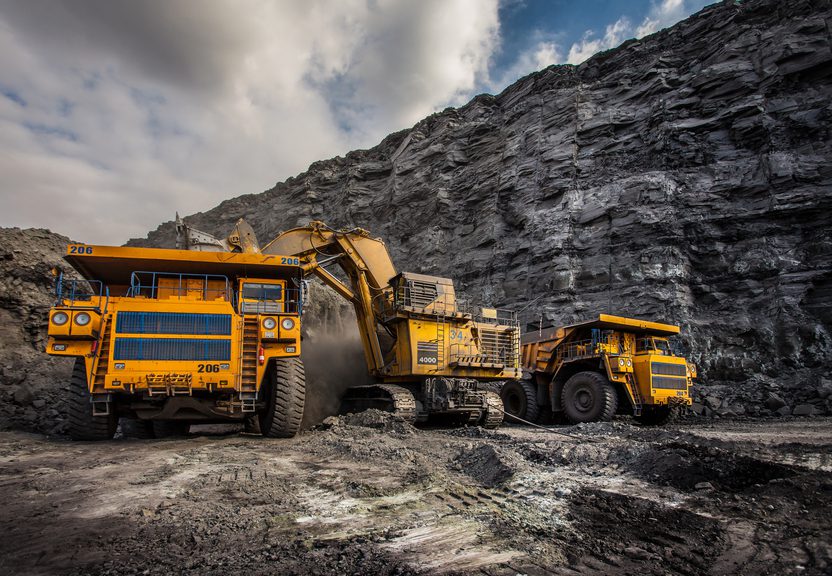As operational realities in mining have shifted irrevocably in the face of a digital revolution, so 2018 will be a year of rapid change in an industry that is poised for growth, according to the latest edition of Deloitte’s annual Tracking the Trends mining report.
Now in its tenth year, the report has followed the mining sector over the past decade as commodity prices reached both historic highs and lows. After hitting the bottom of the cycle, this year’s report identifies strategies companies can take to smooth out the recovery and explores the potential industry disruptors on the horizon.
“To thrive in the mining industry’s historical boom and bust cycle, and capitalise on new opportunities, companies must rethink the traditional mining model,” says Ian Sanders, Deloitte National Mining leader. “Profound change takes time. To change for the better and pave new paths for the future, the mining industry must focus on driving ongoing investments in innovation and digitisation, inspiring their approach to the workforce of the future, manifesting in their commitment to strengthen government and community relations, and guiding their efforts to repair their public image.”
Commodities of the future – predicting tomorrow’s disruptors
Turning disruption into opportunity requires a long-term view capable of assessing how emerging market trends may affect the demand for specific commodities.
“Looking back just 20 years, it would have been hard to believe that nickel, lithium, cobalt and graphite would be an affordable way to power batteries. But, today that is the reality and a potential growth opportunity, particularly with the emergence of electric vehicles,” says Deloitte Consulting Mining Leader, David Cormack. “And although asteroid mining for rare metals still sounds like science fiction today, the market potential in the not-too-distant future could be huge. If mining companies want to get ahead of the trends, they need to delve deeply into emerging market disruptors.”
Additional trends identified in Tracking the Trends 2018, include:
- Bringing digital to life: data – and the ability to organise, manage, and process it – is rapidly becoming a competitive differentiator. Mining companies must embed digital thinking into the heart of business strategy and practices to transform the way corporate decisions are made
- Overcoming innovation barriers: innovation is necessary for the industry to transform, and it isn’t confined to technology; it includes the adoption of more innovative approaches to engaging with stakeholders, re-envisioning the future of work, and identifying the commodities that will be in greatest demand going forward. The need to demonstrate near-term returns combined with a traditionally risk-averse culture that does not foster collaboration are hindering efforts to innovate within the industry
- The future of work: while the adoption of digital solutions, such as robotic process automation, autonomous equipment, and artificial intelligence will augment performance in the mining industry, it also has potential to cause upheaval. Rather than eliminating jobs though, it will likely translate into concerted efforts to retrain people to use technology and redesign jobs at both the mine site and in the back office
- Shifting perceptions: to rebuild trust with employees, investors, communities, governments, and the public, many leading mining companies are embarking on efforts such as taking decisive public stances around corporate social responsibility, adhering to voluntary sustainability standards, and passing shareholder resolutions regarding increased disclosure on climate change
- Transforming stakeholder relationships: rather than approaching relationships with communities and governments as a cost of compliance, companies must determine how to make a concrete social impact that adapts to the benefit of different stakeholder groups
- Water – finding sustainable solutions to a pressing issue: as the UN estimates that water scarcity impacts about 40% of the global population, mining companies must enhance their approach to water management through innovative methods designed to reduce, reuse and recycle water in water-scarce regions, and to contain and treat wastewater to prevent spillage or contamination of downstream water flows
- Changing shareholder expectations: performance measures should reflect varied objectives to create value for multiple constituencies – including customers, employees, suppliers, and communities – not just shareholders. This would free up boards to focus more on long-term strategies, succession planning, and leadership development, while linking executive compensation to broader corporate goals—including those related to good corporate citizenship and ethical behaviour
- Reserve replacement woes: as supply constraints plague the industry, mining companies will need to find a more agile way of replacing reserves – one that allows them to engage in exploration and development without sinking in large amounts of capital for long periods of time
- Realigning mining boards to drive transformation: Boards mired in old ways of thinking will increasingly struggle to fulfil new mandates, such as taking a more active role in challenging the executive team on topics from corporate strategy to digital disruption, talent management, and emerging risk factors. Diverse perspectives are necessary if mining boards are to effectively challenge organisational assumptions, assess the validity of new ways of thinking, and help determine if the organisation is taking on too much risk, or perhaps not enough.














Add Comment